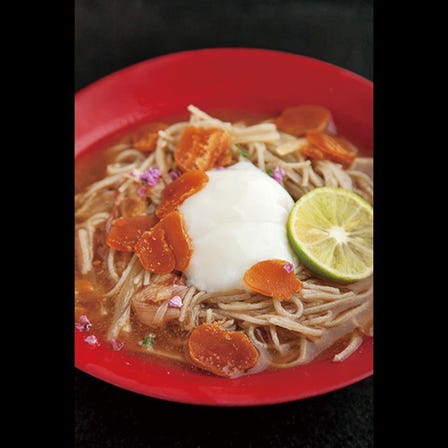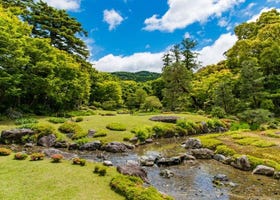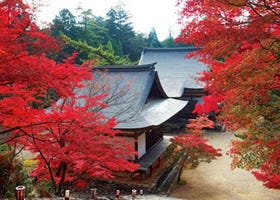Description
Originally a villa belonging to the Tokudaiji Family, the land was handed to Katsumoto Hosokawa (deputy of the Shogun during the Muromachi Period) in 1450. He established Ryoan-ji Temple as a Zen temple belonging to the Myoshin-ji School of the Rinzai Sect and invited Giten Gensho from Myoshin-ji Temple to be its founder. The karesansui (dry landscape) of Hojo Garden within the temple is a world-famous rock garden. Although the original temple was destroyed during the Onin War, Katsumoto's son, Masamoto Hosokawa, saw to its reconstruction in 1499. It is said that the rock garden was created at this time, but its precise date of origin and designer are unknown. The intent behind the design is likewise shrouded in mystery, and the ambiguity has added to the temple's popularity. The rock garden is designated by the government as a Historic Site and Special Place of Scenic Beauty and was also registered as a World Heritage Site by UNESCO as one of the Historic Monuments of Ancient Kyoto in 1994.
・The rock garden that captivated Queen Elizabeth
The traditional rock garden is a rectangular space of 248 square meters, with 15 rocks of varying sizes laid out among raked white pebbles. The rock formations are known by different names, such as ”Tiger Cubs Crossing the Water” and ”Shichi-Go-San (7-5-3) Arrangement.” Queen Elizabeth spoke highly of the stone garden after viewing it during her official state visit to Japan in 1975, which propelled Ryoan-ji Temple to fame across the world.
・Stroll through the pond garden to view different seasonal flowers that breathe nature into the temple grounds
Ryoan-ji Temple is most well-known for its rock garden, but the south side of the temple complex offers a big garden for visitors to stroll through, surrounding a large, reflective pond that was once famous for its mandarin ducks. Seasonal flowers brighten the garden, offering visitors an opportunity to enjoy the beauty of nature. It stands in striking contrast to the austere simplicity of the rock garden, and the existence of these two different styles of gardens further enhances the appeal of Ryoan-ji Temple.
・The tsukubai (washbasin) from Mitsukuni Tokugawa that tells one to be satisfied with what one has
The tsukubai washbasin placed in front of Zorokuan Tea House is said to be a contribution from Mitsukuni Tokugawa, who was head of the Mito Domain. The center of the basin is square and the kanji characters on the surrounding four sides read ”ware tada taru wo shiru (I know only satisfaction).” It illustrates a well-known Zen teaching that says, ”Those who are satisfied with what they have are rich in spirit, even if they are materially poor. In contrast, those who know no satisfaction remain poor no matter how rich they are.” It reflects the essence of Buddhism and is also an integral part of the tea ceremony mentality. The washbasin found behind the Hojo building is a replica and the real tsukubai is not available for public viewing.
Location Information
-
- Address
-
13, Ryoan-ji Goryounoshitacho, Ukyo-ku, Kyoto-shi, Kyoto, 616-8001
-
- Nearest Station
-
Ryoanji Station
・ Keifuku Dentetsu-kitano Line
7 minutes on foot
-
- Phone Number
-
075-463-2216Available languagesonly in Japanese
-
- Hours
-
8:00am - 5:00pm
*From March to November
8:30am - 4:30pm
*From December to February
-
- Closed
- None
-
- Public Site
- Official Site
Recommended Spots in Area
- Visiting
- Eating
- Shopping
- Lodgings
-
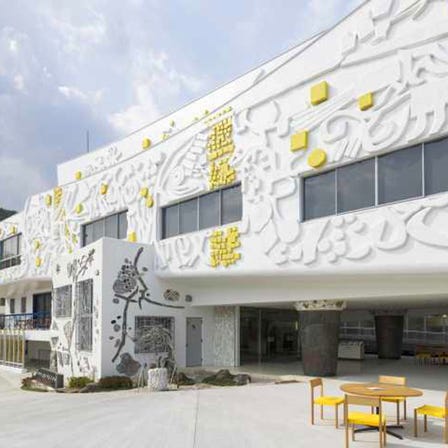 Kyoto Prefectural Insho-Domoto Museum of Fine ArtsKinkakuji Temple, KitayamaArt Museums
Kyoto Prefectural Insho-Domoto Museum of Fine ArtsKinkakuji Temple, KitayamaArt Museums -
 Hirano Jinja ShrineKinkakuji Temple, KitayamaShrines
Hirano Jinja ShrineKinkakuji Temple, KitayamaShrines -
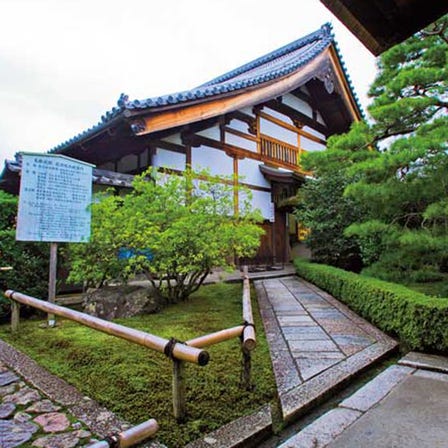 Ryogen-in TempleKinkakuji Temple, KitayamaTemples
Ryogen-in TempleKinkakuji Temple, KitayamaTemples -
 Imamiya Jinja ShrineKinkakuji Temple, KitayamaShrines
Imamiya Jinja ShrineKinkakuji Temple, KitayamaShrines -
 Ninna-ji TempleArashiyama, UzumasaTemples
Ninna-ji TempleArashiyama, UzumasaTemples -
 TOEI KYOTO STUDIO PARKArashiyama, UzumasaTheme Parks
TOEI KYOTO STUDIO PARKArashiyama, UzumasaTheme Parks
-
NenrinboKinkakuji Temple, KitayamaRyokan
-
Kyoto Stay Sakura Nijo Castle West INijo Castle, Kyoto Imperial PalaceJapanese Guest Houses (Minshuku)
-
Resi Stay ShinshinenNijo Castle, Kyoto Imperial PalaceVacation Homes
-
TsubameyaArashiyama, UzumasaJapanese Guest Houses (Minshuku)
-
Nishijin NarahianNijo Castle, Kyoto Imperial PalaceVacation Homes
-
Hotel Utano Kyoto BeshoArashiyama, UzumasaRyokan


















